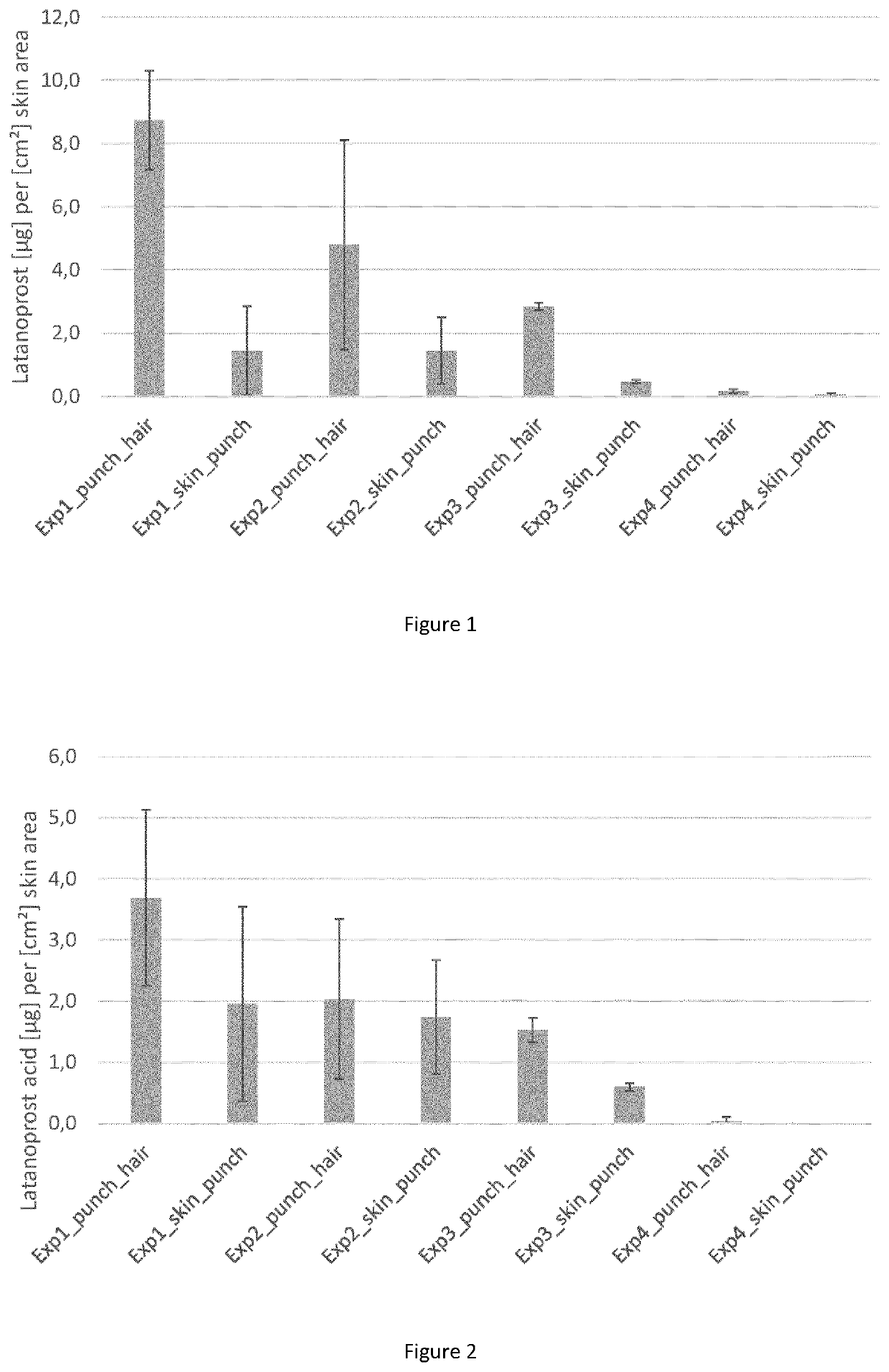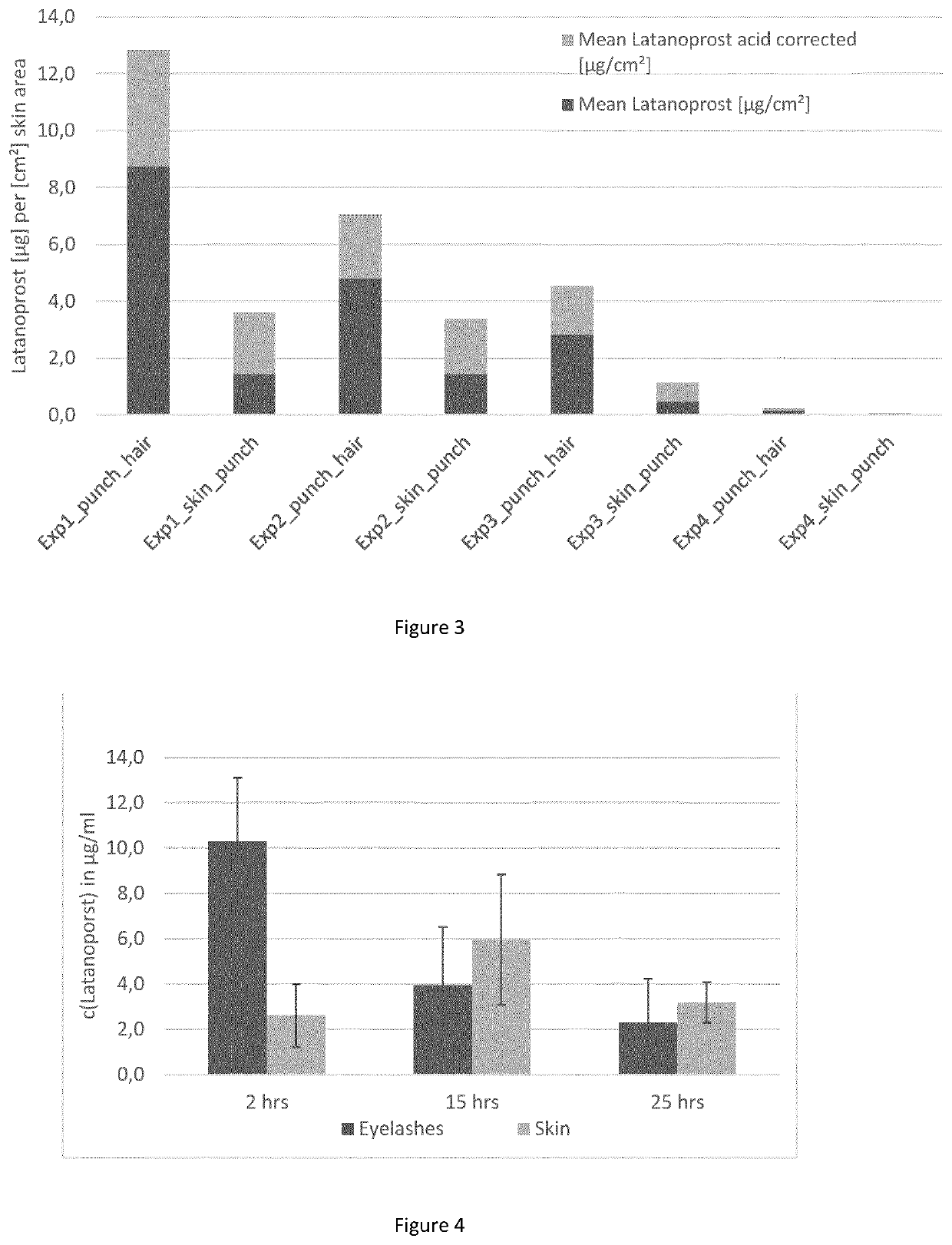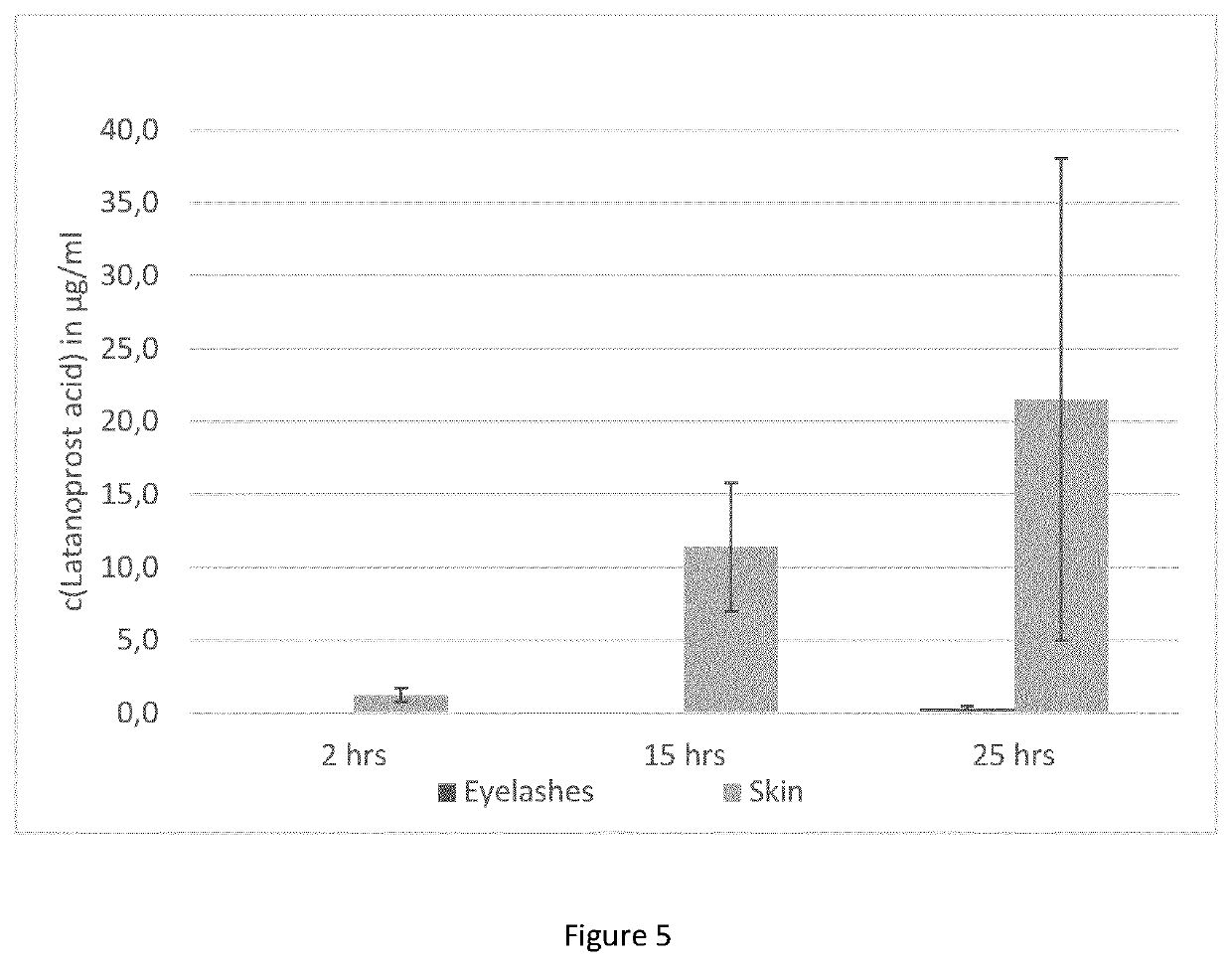Topical composition comprising a prostaglandin analogue
a technology of prostaglandin and analogue, which is applied in the direction of dermatological disorders, organic active ingredients, drug compositions, etc., can solve the problems of further hair loss, significant psychologic distress, and difficult access to the hair follicle, and achieve the effect of high amounts of cosolvents and other components and convenient achievemen
- Summary
- Abstract
- Description
- Claims
- Application Information
AI Technical Summary
Benefits of technology
Problems solved by technology
Method used
Image
Examples
example 1
on of Latanoprost Solution in Minipig Skin and Their Hair Roots
[0160]Formulation 1: latanoprost (Yonsung Fine Chemicals, purity 100.2%) dissolved at a concentration of 0.5 mg / ml in a solution of 1-perfluorobutyl-pentane and 1% v / v ethanol. Formulation 2: latanoprost (Yonsung Fine Chemicals, purity 100.2%) dissolved at a concentration of 0.1 mg / ml in a solution of 1-perfluorobutyl-pentane and 1% v / v ethanol. Formulation 3: latanoprost (Yonsung Fine Chemicals, purity 100.2%) dissolved at a concentration of 0.5 mg / ml in a solution of water, 50% v / v ethanol, 20% propylene glycol. The vehicle of formulation 3 corresponds to the aqueous vehicle of Blume-Peytavi (J. Am. Acad. Dermatol. 2012 May; 66(5):794-800), containing a high amount of ethanol (50% (v / v)).
[0161]Biological material: abdominal and dorsal full skin, R1 and part of L1 region, of 5 months old Gottingen minipig skin.
[0162]For the incubation experiments, Franz Diffusion Cells (FDC) having an inner diameter of 15 mm and an acce...
example 2
on of Latanoprost Solution in 1-perfluorobutyl-pentane in Hair Roots of Pig's Eyelashes
[0174]Test formulation: 0.5 mg / ml latanoprost (Yonsung, Purity 100.2%) in 1-perfluorobutylpentane (Novaliq) and 1% v / v ethanol (Merck, Secco solve dried).
[0175]Biological material: fresh pig's eyes with eyelids, not in buffer solution during transport from the slaughterhouse to the laboratory.
[0176]The upper eyelids were separated from the eye with scissors, forceps and scalpel. Each eyelid was placed in a glass vessel and incubation with the test formulation was started by addition of 1 ml of formulation. Since the eyelashes had different lenghts, before incubation the eyelashes were shortened to standardise the incubation procedure. After incubation according to the plan in Table 3, the eyelids were washed with 1-perfluorobutylpentane eight times and eyelashes were plucked and weighted, as shown in Table 3.
TABLE 3Eyelid / ReplicateNumber ofnumberpluckedWeight ofCalculatedof eacheyelashespluckedwei...
example 3
on of Cortexolone 17α-propionate
[0180]Cortexolone 17α-propionate (developmental code name CB-03-01; 21-Hydroxy-3,20-dioxopregn-4-en-17-yl propionate; CAS Registry Number: 19608-29-8) was dissolved in 1-perfluorbutylpentane (F4H5) to result in a solution of 1% (w / w) CB-03-01 in F4H5. Franz Diffusion Cells (FDC) experiments revealed that cortexolone 17α-propionate was effectively and rapidly delivered to layers of the skin, including stratum corneum, epidermis and dermis. Interestingly, especially high amounts of cortexolone 17α-propionate were found in the dermis, which is the layer of the skin to which the hair follicle, as part of the pilosebaceous unit, extends into.
PUM
 Login to View More
Login to View More Abstract
Description
Claims
Application Information
 Login to View More
Login to View More - Generate Ideas
- Intellectual Property
- Life Sciences
- Materials
- Tech Scout
- Unparalleled Data Quality
- Higher Quality Content
- 60% Fewer Hallucinations
Browse by: Latest US Patents, China's latest patents, Technical Efficacy Thesaurus, Application Domain, Technology Topic, Popular Technical Reports.
© 2025 PatSnap. All rights reserved.Legal|Privacy policy|Modern Slavery Act Transparency Statement|Sitemap|About US| Contact US: help@patsnap.com



